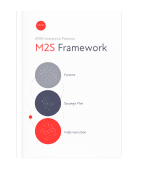What’s New in PWAs for 2025?
What’s New in PWAs for 2025?
Progressive Web Applications have been transforming the way we think about web apps for several years, blending the best features of native apps and traditional websites. In 2025, PWAs will be more powerful than ever, with key improvements in speed, security, offline functionality, and native-like capabilities. They're becoming the go-to choice for companies aiming to deliver fast, reliable, and engaging experiences across all devices.
So, What’s New in PWAs for 2025?
.jpg?width=8192&height=5468&name=PWAs%202%20(1).jpg)
1. Deeper Integration with Operating Systems
PWAs have gained greater support across major operating systems, allowing them to mimic native applications more closely. Modern operating systems like Android, iOS, and Windows are enabling PWAs to access more device-specific features, such as:
- File System Access: PWAs can now interact with the local file system, allowing users to upload, download, or edit files directly within the application.
- Advanced Notifications: Notifications for PWAs have become more dynamic, allowing richer media content, better action buttons, and even background syncing for real-time interactions.
- Camera, Microphone, and Bluetooth: In 2025, PWAs can now use these hardware capabilities more seamlessly, providing enhanced user experiences in areas like video conferencing or IoT-based applications.
2. Faster Load Times with HTTP/3
PWAs benefit from adopting HTTP/3, which dramatically improves load times and connection stability using the QUIC protocol. This next-gen HTTP protocol reduces latency, improves security, and ensures smoother data transmission—particularly important for users with unreliable connections.
3. Increased Support for Large, Complex Applications
The architecture of PWAs has been evolving to support more sophisticated applications, rivaling full desktop software in complexity. In 2025, developers can now build highly functional PWAs that support:
- Real-time collaboration: With improvements in WebRTC and WebSockets, PWAs can handle real-time editing and collaborative features, similar to Google Docs or Figma.
- Increased Offline Storage: PWAs can store larger amounts of data offline using IndexedDB and local storage, making them viable for complex applications like CRM systems or media platforms.
- Native App-like Performance: Thanks to improvements in JavaScript engines and rendering pipelines, PWAs now perform faster and with smoother transitions, bridging the gap between web and native applications.
4. Seamless App Distribution
One of the major advancements is the growing acceptance of PWAs on app stores. Both Google Play Store and Microsoft Store now allow PWAs to be listed alongside native apps, offering a simplified distribution channel without needing a separate codebase. This means businesses can distribute their PWAs more widely and maintain a single codebase for web and app store users.
5. Enhanced Security with WebAuthn
With WebAuthn becoming a standard for secure authentication, PWAs now directly support biometric logins (like fingerprint and facial recognition) through browsers. This creates a safer and more convenient experience for users accessing sensitive applications like banking platforms or e-commerce sites.
Applications
Offline-First Experiences: With advanced service workers and improved caching strategies, modern PWAs can operate even more efficiently offline. This is vital for areas with inconsistent internet coverage or businesses that rely on real-time data collection.
Cross-Platform Efficiency: PWAs offer a single codebase for web and mobile applications, significantly reducing development and maintenance costs while ensuring a unified user experience across platforms.
Increased Engagement: With deeper OS integration, PWAs can leverage features like push notifications, geolocation services, and background sync to keep users engaged even when not using the app.
Example Technologies
Workbox 6.x: The latest version of Workbox simplifies the process of managing service workers, caching strategies, and background sync for faster, more reliable PWAs.
Lighthouse: Google's Lighthouse tool has improved its auditing capabilities to evaluate better PWA performance, SEO, accessibility, and other crucial factors for a high-quality user experience.
Conclusion
In conclusion, 2025 marks a significant leap forward for Progressive Web Applications, enhancing their speed, functionality, and integration with operating systems. With deeper access to native features, faster load times through HTTP/3, and improved offline capabilities, PWAs rival native apps in performance and complexity. These advancements, coupled with seamless app distribution and enhanced security features like WebAuthn, make PWAs a powerful and cost-effective choice for businesses looking to deliver engaging, cross-platform experiences. PWAs are not just the future of web development—they're the present.




%201.svg)





